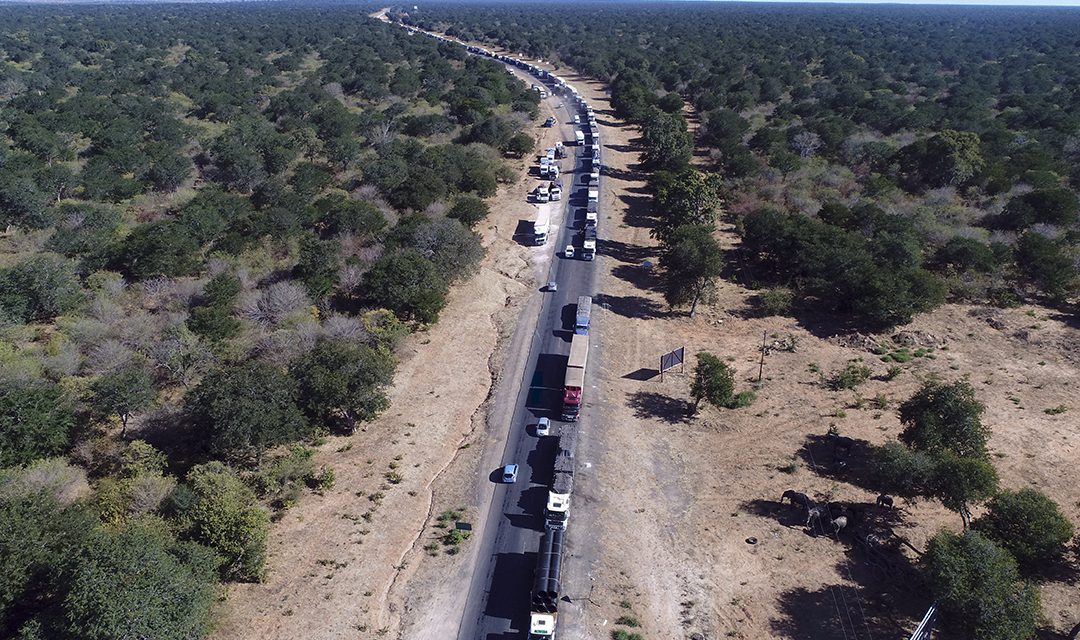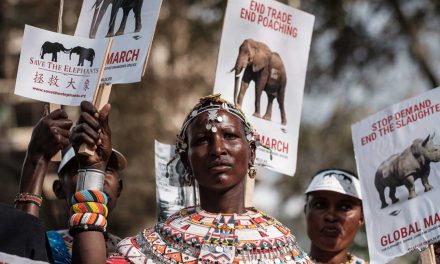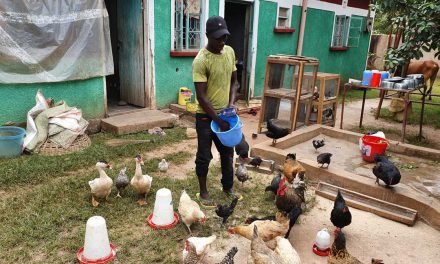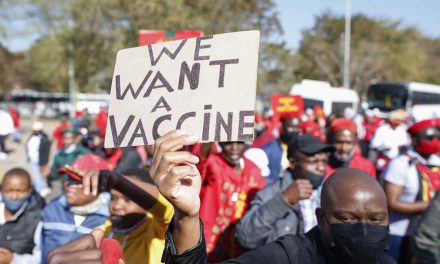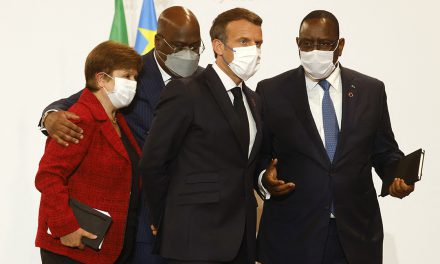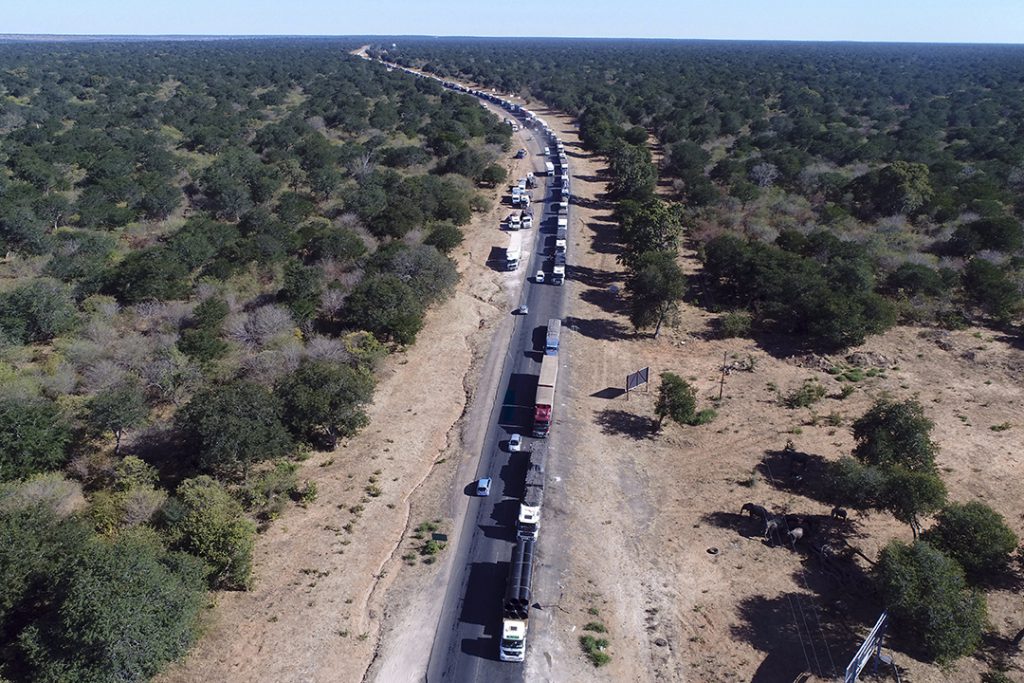
Trucks wait in the long queue to cross the river over the Kazungula bridge in Botswana, May 10, 2021. Photo Monirul Bhuiyan/AFP
Regional integration helps countries overcome divisions that impede the flow of goods, services, capital, people and ideas. The World Bank has described these divisions as a constraint to economic growth, especially in developing countries.
“The idea is that by having a larger market, there is more built-in flexibility in terms of sourcing and selling different goods and crops, while better physical connections can make it easier and cheaper to move goods around,” Dr Bruce Byiers, the head of programme for African institutions and regional dynamics at the European Centre for Development Policy Management (ECDPM), told Africa in Fact.
Byiers views regional integration as a powerful tool to build resilient and future proof-economies. “Shipping costs, at one point, cost more from southern to northern Mozambique than from Asia to northern Mozambique – so integrating within and between countries also helps integrate markets and bring that market responsiveness that can help improve resilience to shocks,” he points out.
In some parts of the continent, particularly in the East African Community (EAC) and the Economic Community of West African States (ECOWAS), the integration process has made progress, with these two regional blocs generally considered to have advanced furthest, Byiers notes. The situation looked rosy until the COVID-19 curse struck, stalling bringing regional integration efforts continent-wide. For instance, the pandemic was expected to strain intra-SADC trade, bringing down its GDP by 4.8% in 2020, lower than the growth of 2.1% recorded in 2019.
The pandemic, Byiers says, has led to further barriers at borders, as well as restrictions on the movement of goods and the people transporting them. Indeed, at one stage and in some places, truck drivers were regarded as transmitters of the virus and thus unwelcome.
Nonetheless, he points to a positive development with anecdotal evidence from West Africa, which was shared by the United Nations Economic Commission for Africa (UNECA). Faced with closed borders, some informal small-scale traders, who represent a large amount of economic activity in the region, have worked with each other, “aggregating” their enterprises to work with one transporter to take goods across borders.
“In some ways this is something that those concerned about informal trade have been promoting for some time, but with little effect as it begins to create a degree of formality,”
Byiers notes. Small-scale cross-border trade (SSCBT), which is of substantial importance in African countries, and existed before the colonial era, making up an estimated 30-40% of total intra-SADC trade, with an estimated value of $17.6 billion, according to a report titled ‘Formalization of informal Trade in Africa: Trends, experiences and socio-economic impacts’, published in 2016 by the FAO Africa Regional Office.
The Common Market for Eastern and Southern Africa (COMESA), the largest regional economic community in Africa, says it has developed a simplified trade regime that supports small-scale traders to benefit from the COMESA Free Trade Area (FTA).
“Small-scale traders are assisted to trade across the borders by the COMESA trade information desk officers,” Dr Christopher Onyango, Director of Trade and Customs at the COMESA secretariat, told Africa in Fact.
Furthermore, COMESA has adopted a protocol on the relaxation of visas and free movement of persons, Onyango says. However, a September 2020 World Bank report said the spread of COVID-19 had severely affected small-scale traders and led to the collapse of SSCBT volumes and values, depriving many small-scale operators of their main income stream.
The SADC says the challenge and pressures the pandemic has caused regional economic communities (RECs) has led industries and governments to look at building resilience and finding solutions to managing the social and economic fallout. The grouping is urging its member states to, among others measures, strengthen early warning systems, responses to and the mitigation of pandemics and disasters, which, as COVID-19 has proved, are major threats to education, tourism, and the informal and formal trade sectors.
“Member states should consider developing road maps and action plans that prioritise investments and channel scarce resources to identified economic sectors to resuscitate their economies, strengthen resilience and improve competitiveness,” SADC said in an April 2020 report on the pandemic. “Relaunching strategies should be premised on the existing SADC macroeconomic convergence programme.”
In a continent already performing poorly on productive and infrastructural integration, the World Bank also remains a key contributor to Africa’s regional integration agenda, with existing commitments of more than $19 billion across the institution. Nevertheless, Byiers says Africa’s regional organisations have all responded differently in terms of providing guidance to member states. “In terms of resilience, the opportunity for regional value chains in pharmaceutical goods and Personal Protection Equipment (PPE) is also being discussed more and more, with the African Continental Free Trade Area potentially offering a basis to do so, thus reducing the reliance on outside partners in the event of future pandemics,” he says.
Meanwhile, the ECDPM policy officer for its economic and agricultural transformation cluster, Poorva Karkare, emphasised that regional integration was in no way a linear process. “Different countries achieve it through different means,” she told Africa in Fact. “For example, for some economies it may be about serving the larger regional market, for others it may be about feeding into an industry in the region which is well integrated into global value chains.”
Moreover, experts argue that before regional integration achieves its objectives, there are a set of risks that need to be identified and managed. The lack of adequate complementary policies may lead to inefficient outcomes, the World Bank says, adding that for instance, policy barriers at the border may offset the gains in transport infrastructure cooperation.
“The point here is that putting in place policies for economic integration is only one step,” Byiers says. “Much of what happens in terms of who, and how, will depend on what else is happening in the economy, for example, whether or not the domestic business environment is encouraging for the private sector to invest in, to take advantage of larger regional markets.
“It also relates to things like the quality or environmental and health standards which, if not in place, not enforced, or not harmonised between countries, limit the potential benefits of a larger regional market.”
Nevertheless, in this post-COVID-19 era, where economic inequality seems to have been accentuated, regional integration, which is already creating winners and losers, will expose the fragility of small countries and prolong their struggle to emerge from the crisis.
“The reason larger economies are likely to gain more from regional integration is that they have more of the economic infrastructures and pre-existing activities in place,” Byiers says, “so removing barriers to trade with neighbouring countries may lead to the concentration of investment in one country.
“That is also why market integration is ideally accompanied by freer movement of people, to allow people to follow the jobs, thus off-setting some of the potential inequalities. This is another area where complementary policies can come in to ensure that disadvantaged areas or countries can indeed also benefit from the wider market, either through infrastructure connections or specific initiatives to encourage investments.”

